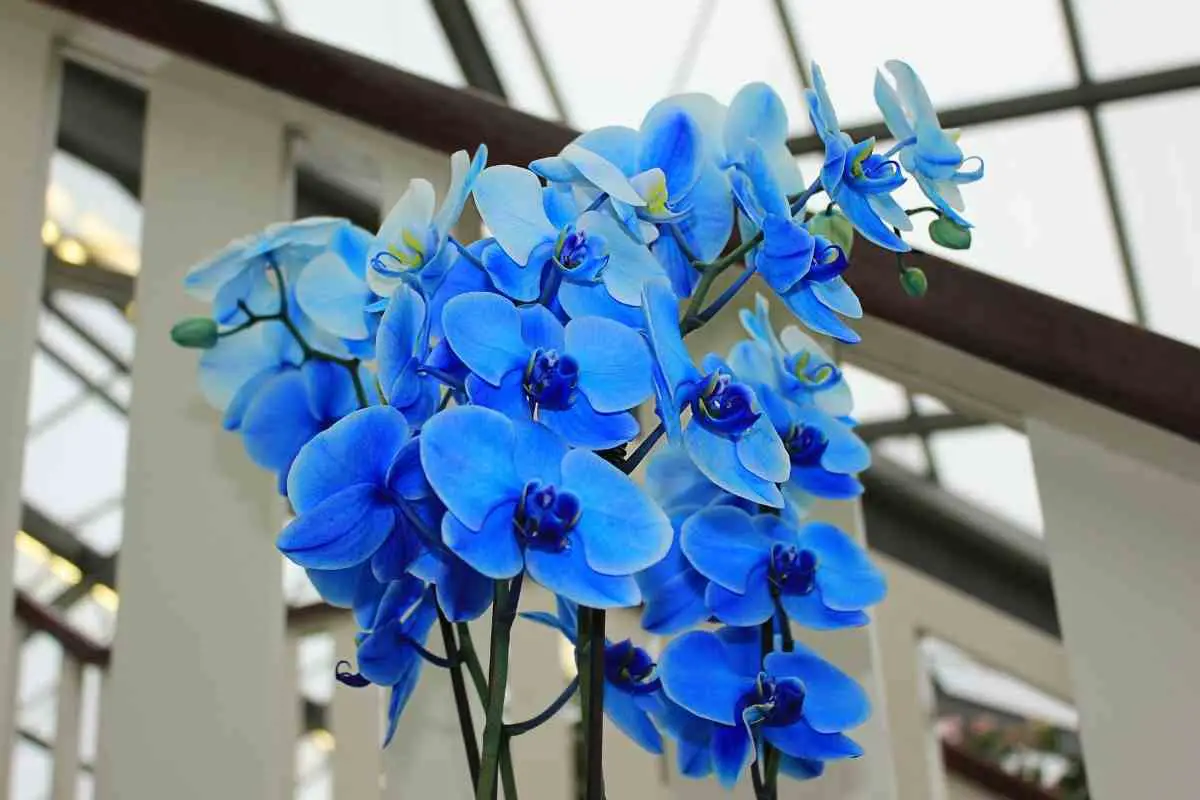Due to its rarity, many gardeners find the prospect of growing blue flowers fascinating.
You might have encountered some blue variants of orchids, but are blue orchids real? Well, they could be real or not.
The true-blue orchids include the Boella coelestis, the Blue Vanda, and Thelymitra crinite. Others, mostly Phalaenopsis, are artificially blue.
What Makes Flowers Blue?
As mentioned above, blue flowers are rare. Sometimes, a thin coating on a plant might make it appear blue.
A small percentage of plant species in the global ecosystem contains blue pigments.
Regarding flowering plants, a mere 10% of known species are blue. An organic compound called delphinidin gives these flowers their unique appearance.
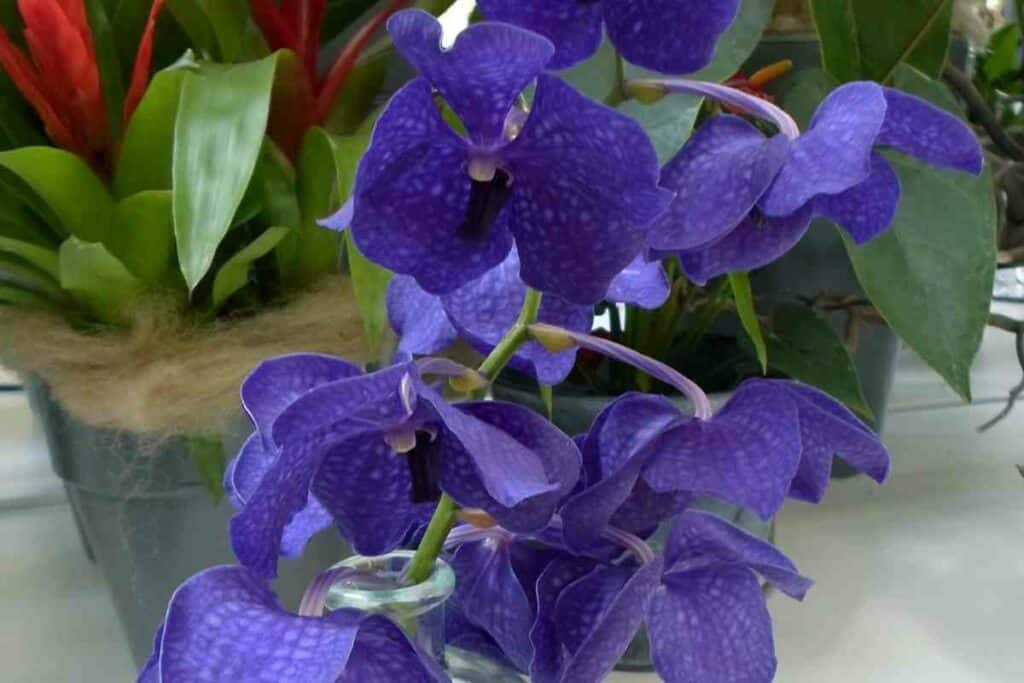
This pigment is also present in:
- cranberries
- grapes
- and pomegranates
However, a lack of delphinidin doesn’t mean that a flower can’t become blue.
Scientific techniques like crossbreeding and genetic engineering make it possible to ‘create’ blue flowers.
However, the artificially made plants won’t pass the pigment to their offspring.
Dye and paint can also make flowers blue. Painted flowers are easy to identify because they have a rough texture.
On the other hand, dyed flowers look real and can easily be confused for natural blooms.
Naturally-occurring Blue Orchids
Are blue orchids real?
Yes, there are some naturally occurring blue orchids.
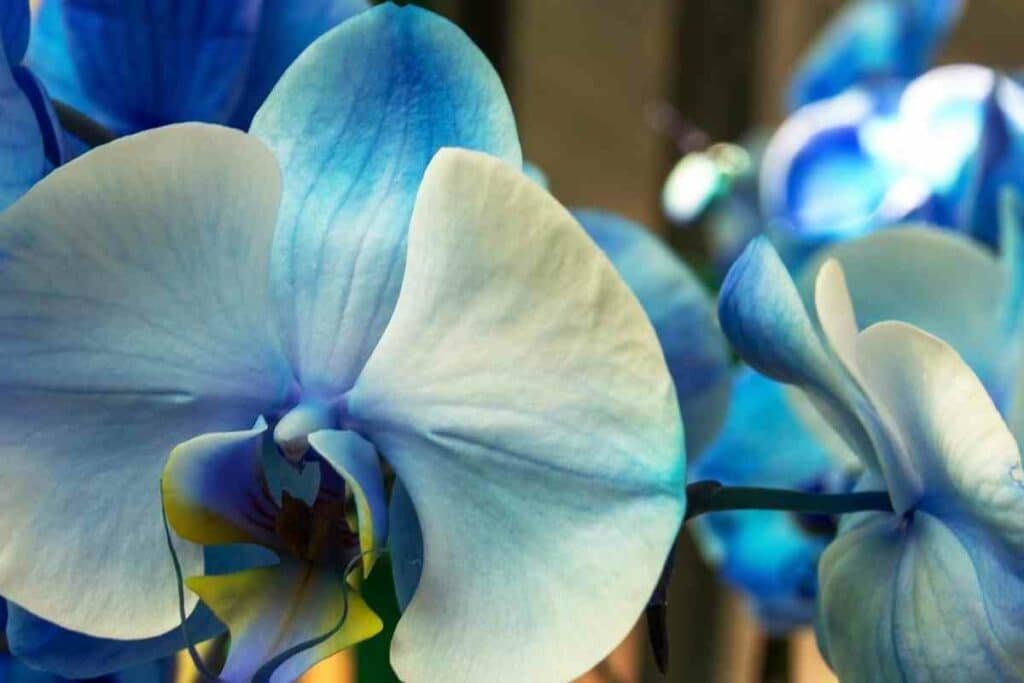
The orchid species whose flowers are naturally blue are:
- Boella coelestis
- Blue Vanda
- and Thelymitra crinite
Let’s look at them in detail below.
1. Boella coelestis
Boella Coelestis is native to the Andes region in South America.
This species is hard to grow at home, which explains its rarity. You must be an expert to grow this plant to maturity.
Regarding shade, its blue flowers lean towards deep purple.
Each spike holds up to a dozen leaves and large flowers with a four-inch diameter. Notably, these blooms have a pleasant scent.
Since they don’t have pseudobulbs, you must water your Boella Coelestis plants at least once every two days. In dry conditions, you must water the flowers daily.
Additionally – These orchids thrive under low-light conditions. Ideally, they grow well in bright shades with indirect sunlight.
The growing location must also have a humidity exceeding 80%, only achievable in a greenhouse.
2. Blue Vanda (Vanda coerulea)
The Blue Vanda is arguably the most prevalent blue orchid.
However, they are expensive to get due to high demand.
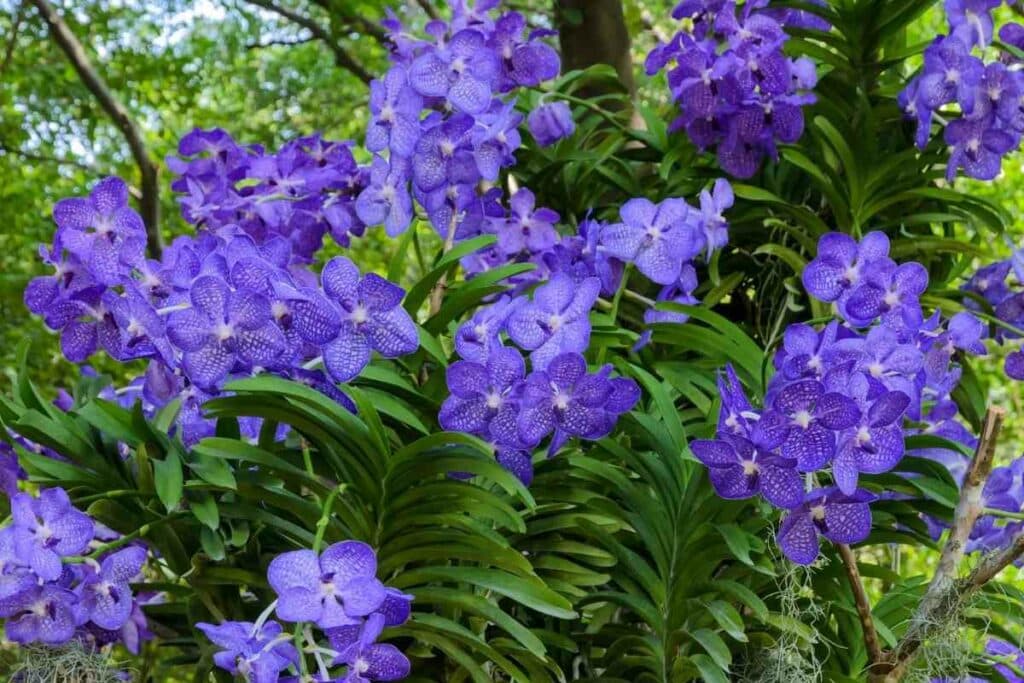
Dr. William Griffith, a botanist, first discovered this species in 1837 in Northeast India near the Himalayas.
Unfortunately, the plant died on its way to England for further research.
Another botanist rediscovered it many years later and succeeded in conducting an in-depth study of the blossoming plant.
Multiple studies confirm that Vanda coerulea originated from Asia.
The plant grows in:
- China
- Myanmar
- India
- and Thailand
It has delicate flowers with narrow petals supported by talk spikes.
Blue Vandana attach to small trees with few leaves and can grow up to 30 spikes.
Botanists and horticulturalists harness the blue pigment for making blue orchid cultivars.
Few People Know – The flowers are also helpful in treating ocular complications like glaucoma. Scientists are also exploring the effectiveness of Blue Vandas in slowing down aging.
3. Blue Lady Orchid (Thelymitra crinite)
The Blue Lady orchid is your perfect choice if you’re a purist.
Despite lacking a discernible scent, it’s the bluest orchid you can find.
It’s also one of the bluest blossoming plants. It has black and yellow columns at its center, so some people call it the Sun orchid.
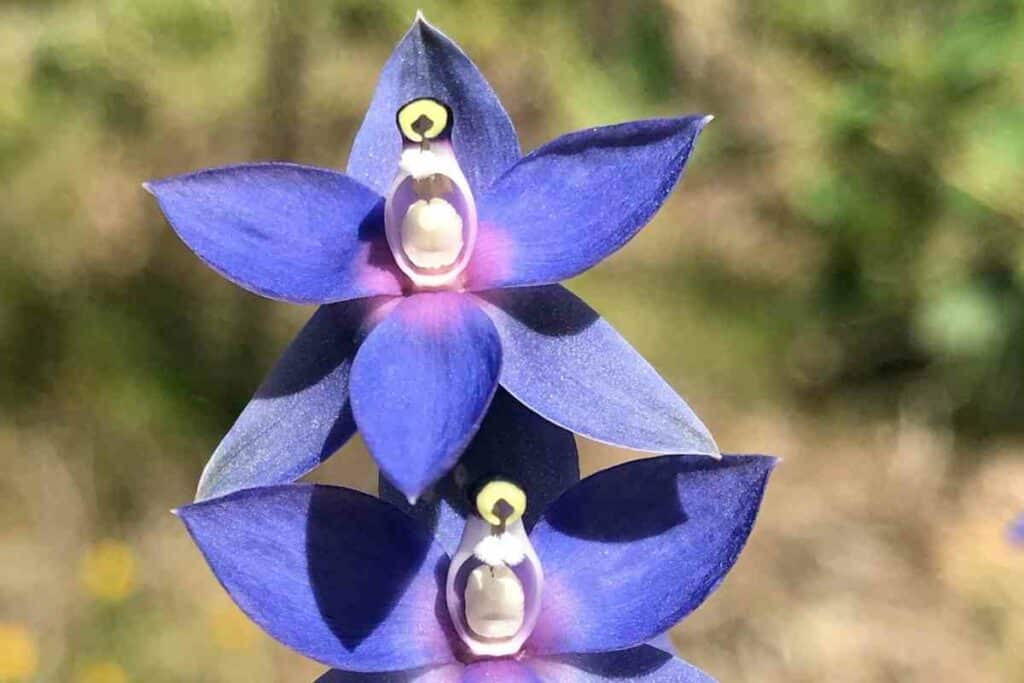
The Blue Lady orchid is native to a small region in Western Australia. Its spike grows up to 39 inches tall and supports flowers with a diameter of 1.5 inches.
Besides being tiny, these flowers blossom between 9 a.m. and 4 p.m.
Thelymitra crinite flourishes in hot and humid environments, such as coastal regions, forests, and swampy areas.
Although it’s not an endangered species, finding the Blue Lady orchid outside its natural habitat is almost impossible.
Artificial Blue Orchids
The two most common artificial blue orchids are Blue Mystique and Blue Phalaenopsis.
Both are products of dye application, although the former has a patented formula that makes it costlier.
How Are Blue Orchids Made?
Dye application is the primary method for making artificial blue orchids.
The process starts with the identification of the whitest plants, mainly Phalaenopsis.
Other colors can work, but the results won’t be as impressive.
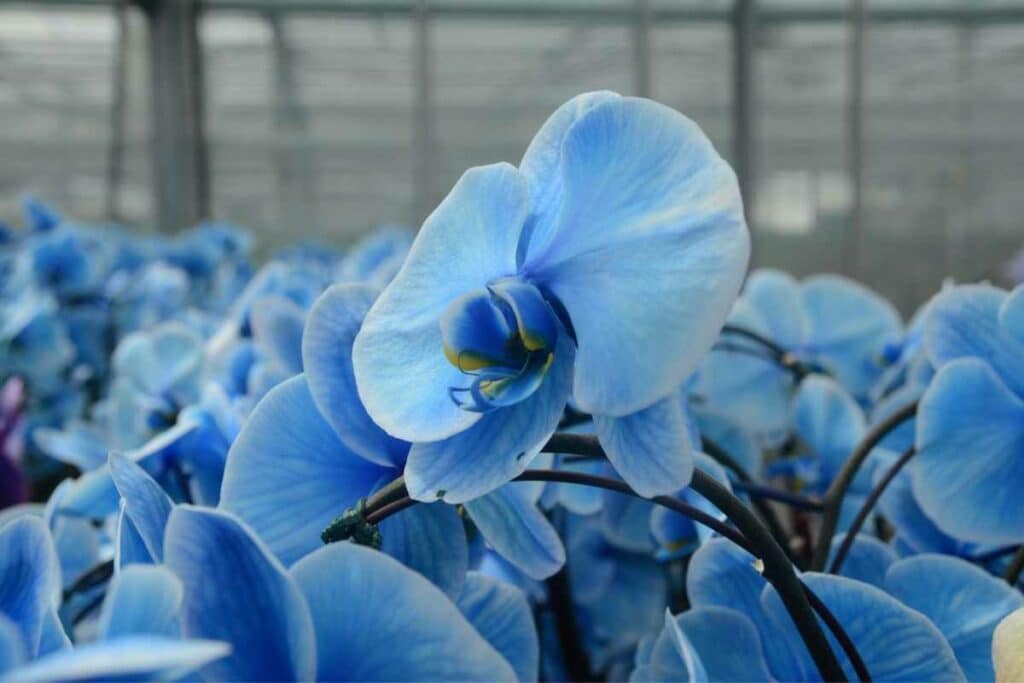
After identifying the right plants, the grower injects blue day into the stem.
As the plant absorbs water from its potting mix, it also takes in the blue dye that alters the flower’s original hue.
Although dyed orchids look natural, you can tell that they aren’t by examining the color distribution:
- If it’s uneven, the blue hue isn’t authentic.
- Another indicator is the intensity of the color – deep blues and pastel blue are uncommon in the orchid family.
- It’s worth noting that the dye is temporary. Once the current blooming cycle ends, the new flowers will have the species’ original color.
For this reason, many people use artificial blue orchids on special occasions like weddings, birthdays, and anniversaries.
However, the future looks promising.
A Japanese University is working on developing a blue Phalaenopsis through genetic modification.
The process involves the insertion of genes from an Asiatic dayflower into orchids.
If the project succeeds, the blue color will be infused into orchids such that it re-appears when a plant blooms again.
How to Grow Your Blue Orchids
Growing blue orchids is an intricate process suited for experienced gardeners.
If you’re a novice, it helps to start with easy-to-grow species like Cattleya and Phalaenopsis.
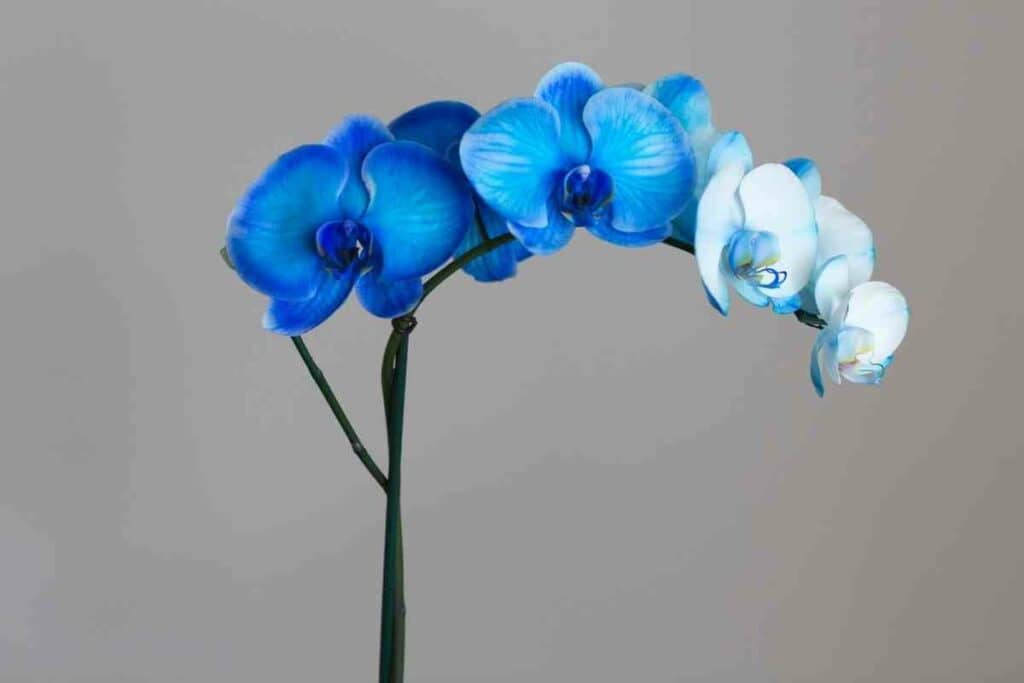
Once you gain experience, you can explore blue orchids like the Blue Vanda.
Vandas have specific requirements, making it difficult to grow them indoors.
For Instance – The ideal daytime temperature is 25 degrees Celsius, and it shouldn’t go below 16 degrees Celsius at night.
Regarding lighting, Blue Vanda excels under direct sunlight, except for midday.
If your area doesn’t receive adequate daylight, you might have to invest in artificial lighting.
Furthermore, you need humidity levels exceeding 80% to grow blue orchids. To achieve this, you must invest in a powerful humidifier or reduce the size of your greenhouse.
The conditions inside the growing zones won’t be comfortable for you.
Lastly: You need to water your plants daily and apply the correct amount of fertilizer. You must also examine the roots so that they don’t overcrowd.
Are Blue Orchids Safe for Human Consumption?
Most natural orchids are edible and are used as a culinary delicacy.
However, this doesn’t apply to artificial blue orchids.
Since companies don’t disclose the chemicals used for making the dyes, it’s advisable to avoid consuming artificial blue orchids.
Are Blue Orchids Safe to Household Pets?
Pets are curious and like ingesting everything they encounter.

While eating small quantities of blue orchids won’t harm your cat, dyed plants can cause mild to severe skin irritation and mucus inflammation.
Concerning Dogs – Dyed orchids pose a more minor threat to their health than cats.
Dogs have a resilient stomach lining that can survive peculiar things like shoes, batteries, and dyed orchids.
The compounds in your dog’s gut will ensure that any harmful chemicals are excreted without compromising health.
Alternative Blue Flowers
As seen above, blue orchids are expensive and require intensive care to flourish.
Dyed orchids might be inexpensive, but the hue is temporary, and they can have adverse effects on you and your pets.
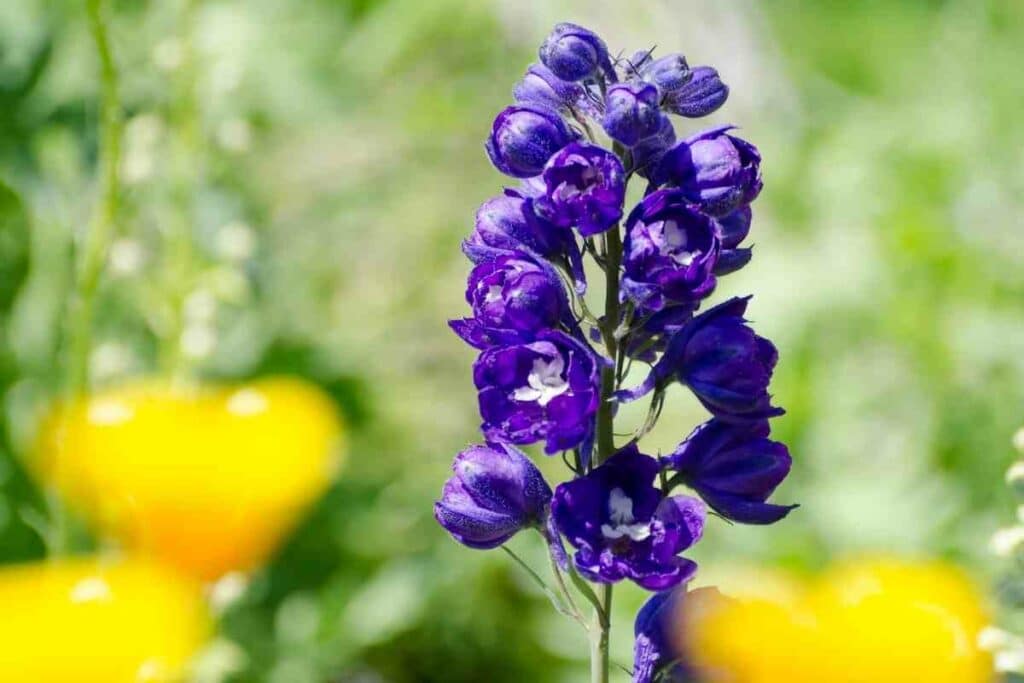
If you desire a blossoming blue plant, cheaper alternatives are more available and easier to maintain.
They include:
- Cornflower – this species has attractive, vibrant blue flowers and is easy to grow.
- Delphinium – although its blue hue leans towards purple, this plant has a stunning visual appeal and requires little care to flourish.
- The Himalayan Poppy – is among the bluest natural blossoming plants worldwide. However, it requires a bit more care than others.
- Hydrangea – if you live in an area with acidic soils, consider growing hydrangea.
Final Words
The hype around blue orchids is understandable. After all, there are beautiful and unique.
However, their uniqueness means that they aren’t easy to find and are expensive.
Dyed orchids are more accessible, but their appearance is only temporary.
All in all, that’s the way it is; you can only hope that scientists will discover ways to make these marvels of nature more affordable and available.
